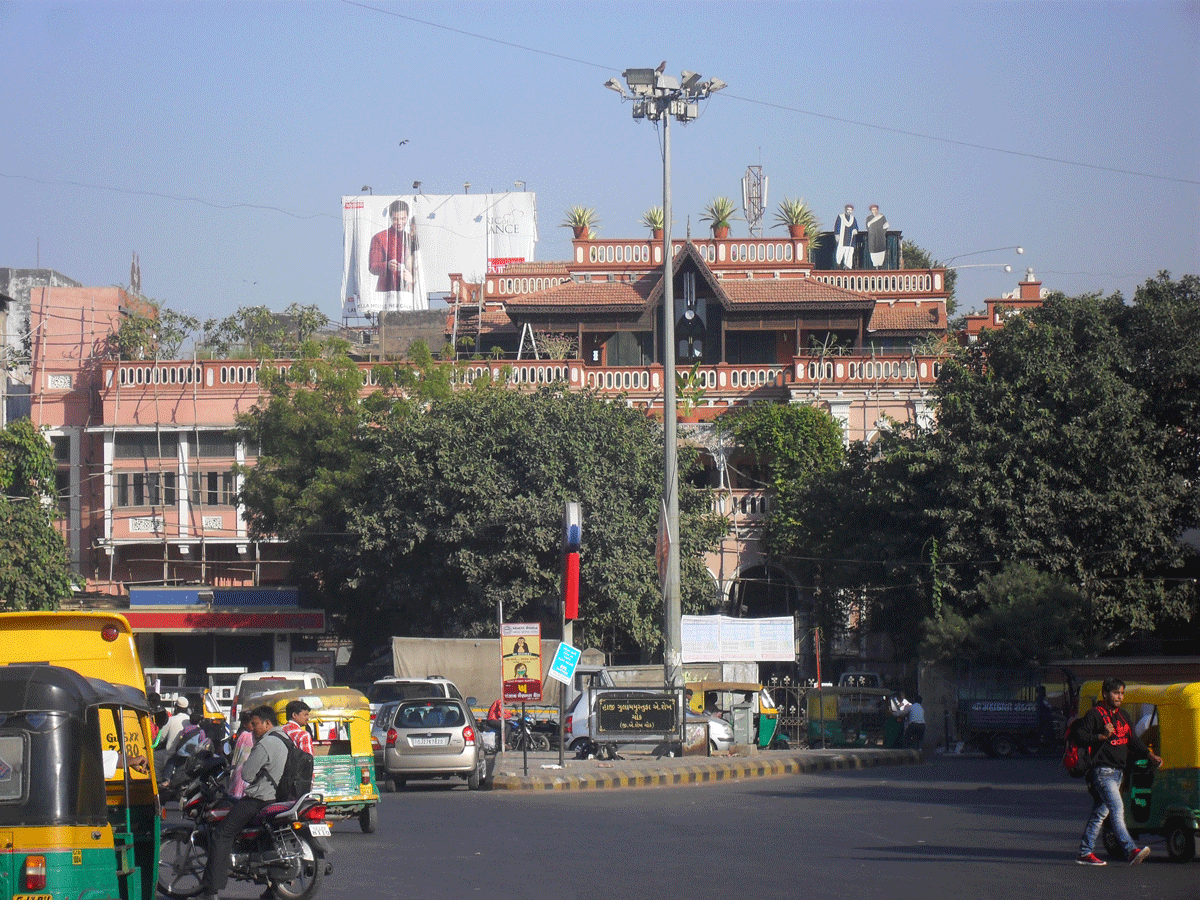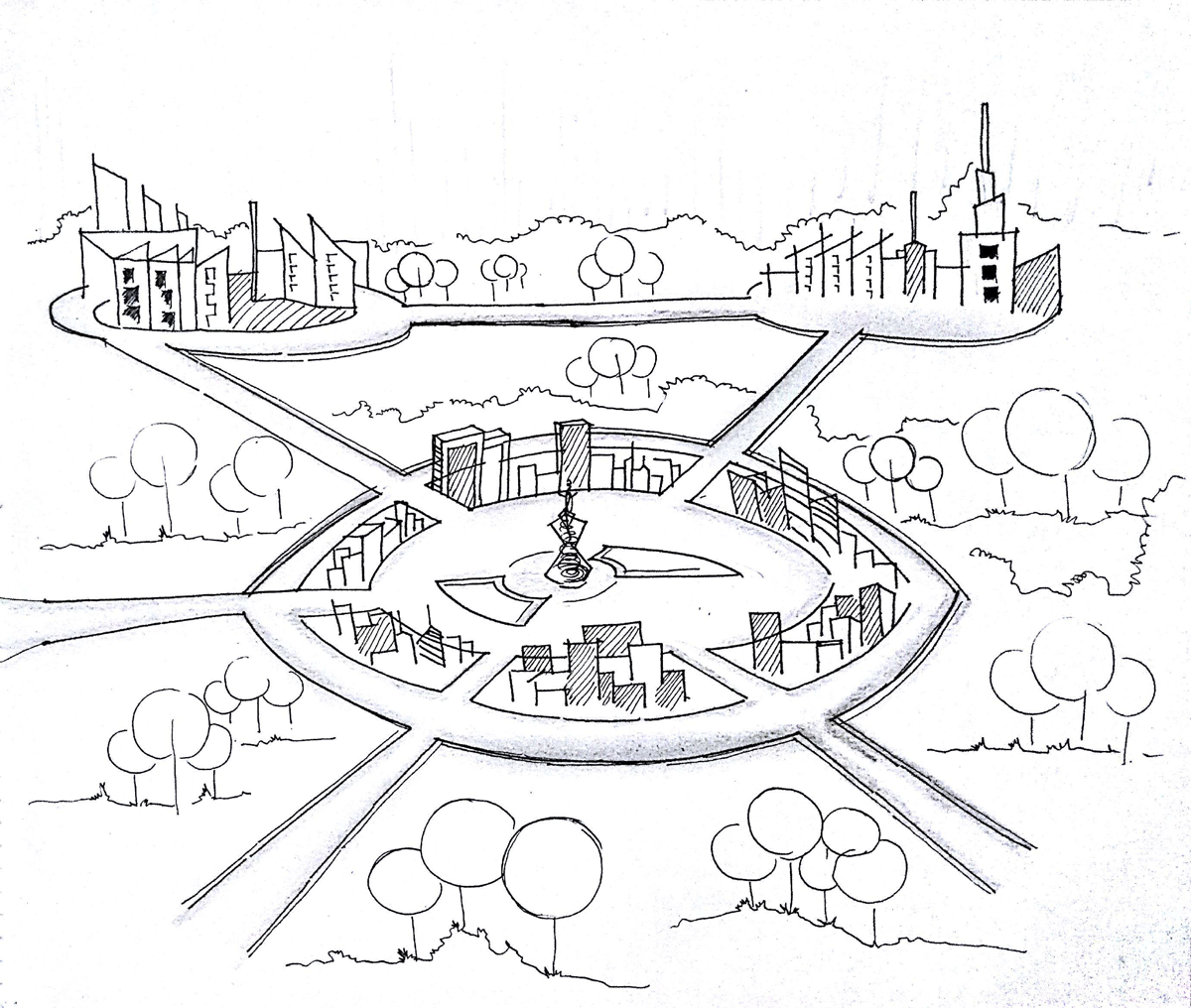Submitted by Pappal Suneja
Architectural Interventions to enhance the liveability aspect of the Cities of India
India Architecture News - Sep 15, 2018 - 02:09 23868 views

The newer approach for creating a space that demonstrates ground experimentation for future communities that shall inhabit nature harmoniously calls for societies to be an extension of our natural environment. On the Design level, increase in awareness about public issues is important as towns and villages are getting chaotic day by day. People have witnessed the deterioration of cities as the time has lapsed. As the quality of life is at stake, there is a dire attention required on the planning aspects of the city that is continuously evolving. The growth of a city is both inevitable and irreversible as any city is meant for the people and shall grow with them. However, this growth can certainly be directed and controlled. To holistically develop a city as a whole, issues on both the macro and the micro levels need to be addressed. There are a few major parameters for consideration. These include firstly the documentation and mapping of the ground reality, then understanding of the problems and issues, and finally, taking remedial actions according to the context. Even smaller issues are a part of the larger problem just like a piece in the jigsaw puzzle. Since ‘Every Solution has a problem associated with it’ the focus should shift from ‘Finding and Designing’ the solution to first clearly understanding and defining the problem. Once the problem has been defined; it may comprise of several smaller set of problems making it into a problem set. There may not be a single solution to a given problem set; there may be a set of solutions and for every set, there could be various alternatives to choose from. Now, it is important to note that what the source of solution is (Is it coming from users, academicians, bureaucrats or a systematic public participation), what is the nature of problem to which the solution is addressed such as problem of a slum been converted into illegal colonies or problem of pollution and traffic congestion where intensity and impact change with time. Thus, the solution must be flexible enough to accommodate variables in the problems.
The authors’ musings over time have led to a few plausible solutions which may have some relevance. The others are just thoughts which need to be shared. There is an increasing emphasis on decentralization in planning. However, there should be a clear distinction between what to be centralized and what to be decentralized for the betterment of the city. Discovery of solutions need not be graded with what others have theorized or done; rather, it must be a contextual response. The solutions for the development of the society need to go up to the last stage and thus should be very strong such that they could be executed well.
 De-Magnetization of City to shift the Central Gravity
De-Magnetization of City to shift the Central Gravity
Public Participatory Planning
The blueprint planning has long been discarded as the top-down approach that excluded stakeholders and was a whim of a planner or a designer, or even a politician. Participatory planning is the newly worshipped catchword where the public can be involved to give inputs and also help in decision making, as they experience several issues on the day to day basis. The problems, priorities and even solutions by them should be put down and the crucial issues can be adequately addressed without overlooking any minor problem. The decision is always based on how good the study is conducted, but public participation may not be that fool-proof always. For instance when the odd-even scheme for the use of private vehicles was implemented as a pilot project in our capital city; most of the users found it inconvenient and irrational. So an out an out users’ response vetoed out the proposal, putting the city’s health and future at great risk again. With this thought, I do not intend to undermine the users’ intelligence and intentions however the individuals who form the collective user groups demonstrated a short-term vision and lack of critical thinking. Thus, we can’t bank on only public participation for the up-gradation of the society. Had there been a blueprint for the health of the city (covering the qualitative aspects of the life) and if this had come from the bureaucrats and technical experts who may scientifically access information, analyze and then give their outputs, we could involve public for helping in the execution of the same. Also, bigger issues like pollution and traffic congestion may not completely be addressed by the master plan which is the blueprint document for the planning and development of any city. Just like said before, we should avoid the buzzword syndrome and rather focus on the inclusion of both the parameters into a balanced call for achieving the best of the outcomes.
 Elevated Road System as a design solution, cut-outs for farms and public realm
Elevated Road System as a design solution, cut-outs for farms and public realm
Holistic Approach
Any product unless crafted to the last detail is not successful; hence, we must proceed step by step to undertake the architectural interventions to make our cities more liveable. For example, an addition of flyover in a city though eases the traffic flow, on the other hand, divides the city into two segments creating punctures and restricted boundaries. Similarly, local culture is also inappropriate for the traffic that needs to be addressed in the case of historic cities. The solution first calls for acceptance of the settlement with its limitations and then to proceed for planning with restrictions that may be solved by legislation. Also, adopting a lesser built footprint for the small towns and cities (comparatively less congested in contrast to the mega ones) could be another holistic approach. It may be considered on the basis of average household size and requirement of the people and not as per the financial status of the individuals. There is a connection formulated with towns with less urban structure. Thus, pedestrianization could be a way of life in such places; as one could do away from automobiles for covering shorter distances.
Nature as Engine of Development
Our planet is in a state of abuse as nature seems to be lost somewhere amidst the clutter and chaos of the congested cities specifically the ground that is meant for water seepage; growth of plants is being wasted in the name of development. In order to utilize the natural system as an engine of development, we could have an elevated road system with buildings as the pillar system and farms and public realm in between the cut-outs for a Mega City. This shall minimize the implications on the ground. Second, the central gravity could be shifted elsewhere enabling the bees to follow the honey; an inspiration of the same is the intervention of architect Charles Correa in development of Belapur housing and Navi Mumbai eventually. In other words, as budding architects, we have to plant the magnet in such a way that magnetization does not take place in a single place; that is to put up a plant in say a backward region so that people move and shift once they get attracted to the same. Further, the excellent example of the garden city developed by Raymond Unwin on Ebenezer Howard’s vision of the same is the milestone for the inspiration. So, formulating of garden satellite towns in the outskirts of the cities could be replicated in a few cases. Designers must use their skill for resolving the issues by exposing the thinking of the people as it is never a one-man show to bring about an important change.
Decentralization & Ground Experimentation
Like circus tents, buildings cannot be changed every now and then; it should have the ability to serve the activities of the generations to come. We could limit the size and further consider the decentralization of the same. This is absolute flexibility. The different partners are more independent from each other and the innovation can take place in a decentralized network approach. Further, there is a paradigm shift as far as natural systems are concerned as an engine for development to protect open spaces, strengthen communities, provide ground experimentation and generate adaptable outcomes. If we want societies to be an extension for natural systems, we need to develop a symbiotic relationship to mimic systems available in nature and to call for a new approach that inhabits nature and explores newer ways of creating livable spaces. For this, we need to demonstrate ground experimentations at the micro level for future communities to inhabit the essence harmoniously.
To conclude, the need of the hour states that wastewater management system, water conservation, organic farming and elevated road system with buildings on pillars, de-magnetization of city to shift the central gravity, garden satellite towns, and so on could be considered for future societies of our nation besides having an engine for development to protect open spaces, strengthen communities, provide ground experimentation and generate adaptable outcomes.
Top Image: Old City of Ahmedabad.
All Images © Pappal Suneja
